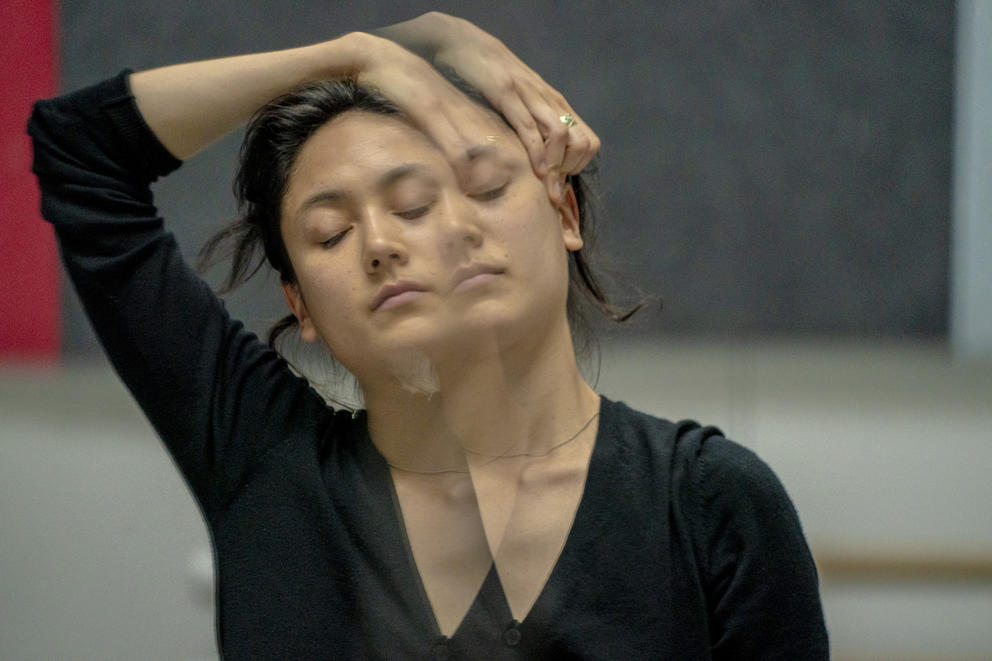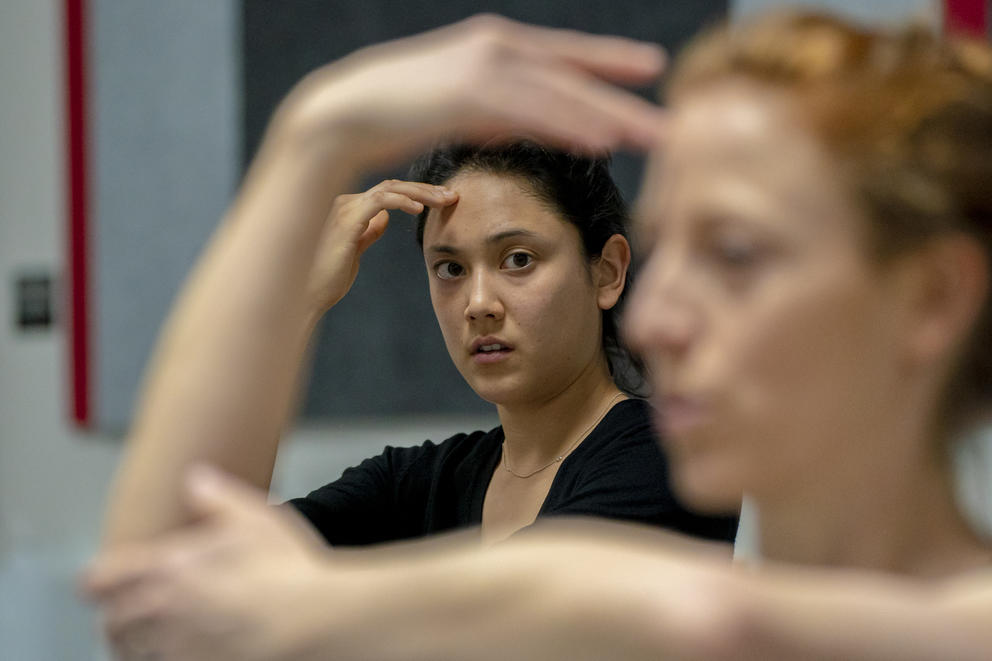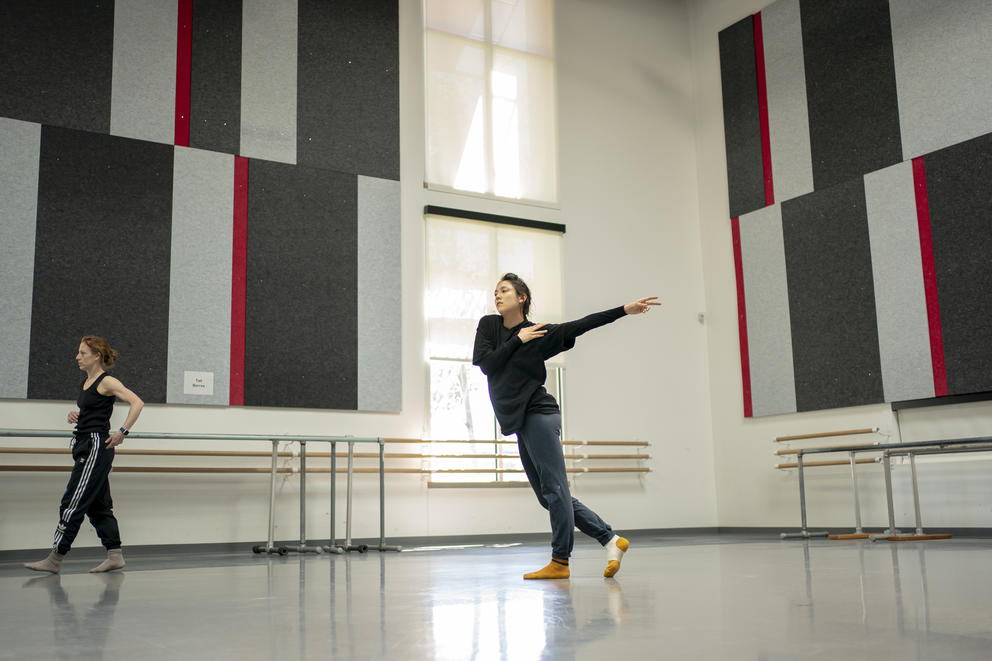“What I loved about that was we’d walk down the street and there was just buzz about what was going on,” Khambatta recalls. He remembers watching theater, dance and music fans mingle, and stumbling onto performances that were out of his artistic comfort zone.
After Khambatta moved to Seattle from the East Coast in 2001 and established a dance company here, he got to know and appreciate the local dance scene. But he didn’t find the eclectic artistic blend that had captivated him during his travels.
He wanted to bring a wider range of artists to Seattle, and to provide more opportunity for local dancers to show audiences what they were creating.
The inaugural Seattle International Dance Festival (SIDF), which offered just a few performances, didn’t quite match Khambatta’s grand aspirations. But 18 years later, SIDF has evolved into an annual platform for dance artists from around the world.
And in a city with a national reputation for its thriving contemporary dance community, SIDF is one of the few outlets that target audiences who are new to the art form.
That said, this is definitely not Dance for Dummies.
Khambatta’s approach to enticing viewers unfamiliar with or intimidated by dance is bringing together hip hop and ballet, jazz and contemporary dance into what he hopes will be an addictive movement gumbo.
“Through split-bill evenings, we’re asking the audience to digest and hopefully celebrate a diversity of genres, as well as the cultural and racial contexts in which the art is created,” says Khambatta.
He believes attendees presented with a rich buffet of styles will walk away with a greater appreciation for the art form — and hopefully, will come back for more.
This year’s Seattle International Dance Festival runs through June 18 at the Broadway Performance Hall and Erickson Theatre, both on Capitol Hill. Four South Korean contemporary dance troupes will perform, as well as guest artists from Switzerland, France and India. But the bulk of the bill is made up of homegrown choreographers and performers.
“The international [in the festival’s name] seems special because it comes from somewhere else,” Khambatta says. “But we have quite a dance scene in our own backyard. My thought was to really bring awareness to the local community.”
With that awareness come opportunities for local dance artists. This year a dozen Seattle area groups are on the roster, from longtime favorites Degenerate Art Ensemble to Mary Sigward + Artists, founded last fall.
In addition to staging their work, SIDF also offers workshops and a choreographers’ residency. Focused specifically on Seattle artists, both emerging and established, the residency provides selected participants with financial support, free rehearsal space and a fully produced festival performance, as well as help with future touring plans.
Mainstage performers outside the residency are chosen by a local panel of dance professionals. And this year, Khambatta tapped two guest curators to put together separate programs featuring regional work.
Donald Byrd, artistic director of Spectrum Dance Theatre, will reprise his piece From the Dark Land, created for the Edmonds-based Olympic Ballet Theatre; and Eva Stone, a PNB school faculty member and choreographer who for many years ran her own dance festival, Chop Shop (now on hiatus), helped program the festival’s final performance.
For the SIDF lineup, Stone sought artists who melded classical and contemporary elements in their work — people who defy neat categorization.
“Seattle has a tendency to be very singularly focused on classical ballet, or on cutting-edge experimental work,” Stone says. “I think what Cyrus and I share is that we like to weave in and out of those realms, like a Venn diagram.”
Demonstrating the rippling effect of dance community connections, Stone tapped PNB soloist and independent choreographer Price Suddarth — who just launched his own company, JUMPKUT — and dance artist Emily Schoen Branch. They’ll appear on a bill alongside works by Victoria Gutierrez and Khambatta’s own company.
Branch, who spent eight years dancing with the acclaimed New York-based KEIGWIN + COMPANY, was delighted by Stone’s invitation. Since moving from New York to Seattle in 2020, Branch has felt stymied by the comparative lack of venues for independent choreographers to show their work.
“Being in Seattle, if you want to make a dance, you have to self-produce,” Branch explains. “In New York, you make a work then casually throw it in a festival to see what works and what doesn’t, what the audience feeds off of and what falls flat. Here, there are very few venues for that.”
That’s not strictly true — local contemporary dancemakers present new work at both Base: Experimental Arts and Yaw Theatre in Georgetown, as well as Velocity Dance Center and NOD on Capitol Hill.
But with the loss of the Northwest New Works Festival, produced by On the Boards for more than 20 years, and Velocity’s reduced capacity for hosting independent choreographers (after losing its longtime home in late 2020), mainstage options have shifted.
Branch plans to premiere a new work, Come to Ground, three thematically linked contemporary solos, performed to a recording of Pacific Northwest writer David Whyte reading from three of his own essays: “Regret,” “Ground” and “Hiding.”
She’s working with Leah Terada, a PNB soloist who frequently performs in non-balletic works; contemporary dancer Rhea Keller; and Kyle Sangil, a member of Seattle’s Whim W’Him contemporary dance troupe.
Although Branch’s piece will be performed only once (June 18 at the Broadway Performance Hall), she’s looking forward to the chance to get the live audience feedback that fuels her choreography.
Suddarth is offering up a short contemporary ballet, Reverie, originally created in 2021 for Ballet Sun Valley. He’d hoped to create something bigger, but has spent much of this past year choreographing for ballet companies around the country. SIDF marks what he calls JUMPKUT’s “soft opening.”
“I am trying to build a cross-disciplinary company,” Suddarth says. He considers it a Seattle home for the work he’s been making nationally and for production and distribution of new dance films, something he started to pursue seriously during the pandemic.
While some observers might consider contemporary ballet and modern dance to be pretty esoteric stuff — less accessible than the short and snappy dance videos that populate TikTok — Khambatta hopes that if audiences see a mixed bill that includes dances inspired by familiar styles like hip hop and jazz alongside ballet or contemporary dance, it might pique their curiosity to give dance a second try.
For him, accessibility is all about familiarity.
“We’re in a current period of melting pot, in terms of movement, spurred in part by the pervasiveness of technology,” Khambatta says. “Artists who incorporate aspects of different genres may seem more accessible because they’re informed by what’s culturally familiar at the time.”
Stone appreciates the mixed-genre dance programs SIDF presents, but to her mind, building new contemporary-dance audiences means programming work that’s not only culturally familiar but also takes the audience’s perspective into account.
“You’ve heard it a million times. ‘Oh, I went to this dance thing and people were rolling around on the floor in their pajamas. I had no idea what was going on!’” Stone laughs, but she acknowledges that to a new viewer, dance can seem weird. “It’s abstract and nonverbal, so why would anybody connect to it?”
When Chop Shop was active, Stone chose choreographers who told stories onstage or created discernible relationships among the dancers, dances that were easy to interpret. “If work was fringy — even if I loved it — if it didn’t fit the mission of the festival, it didn’t get in.”
Unfortunately, Stone struggled to keep her festival afloat. Money was scarce before the pandemic and it’s even harder to come by now, as performing arts groups still struggle to recoup the losses they incurred when venues closed to slow the spread of COVID-19.
While she did produce a virtual Chop Shop during the pandemic, with a staff of only two Stone didn’t have the necessary time or energy to relaunch when theaters started to welcome in-person patrons again.
Even though SIDF has managed to survive the past three years, producing a virtual festival in 2020 and live events the following two years, this year’s festival is roughly half the size it was in 2019, when it welcomed approximately 5,000 patrons.
Looking toward next year, Khambatta is confronting the same fundraising hurdles that faced Stone.
“Sometimes it’s one individual, or a couple of individuals, who carry the whole thing,” Khambatta says. “Many companies have folded because those people have decided ‘You know what? I’m done.’”
That hasn’t happened locally this year, but this past spring one of Seattle’s largest contemporary companies, Spectrum Dance Theatre, had to extend a regularly scheduled artist furlough period while it raised money to finish its 40th anniversary season.
Khambatta may be daunted by the task of producing his festival, but on the surface he’s upbeat and confident. A major funder for his artist residency has reupped its support, and he’s actively exploring new ways to extend his dance tentacles into the wider community, creating seasonal mini-festivals and pop-up dance shows on the streets of South Lake Union.
In many ways, Khambatta is still chasing the dream that fueled his original festival 18 years ago. But expanding a dance audience isn’t as simple as, say, setting up a baseball diamond in an Iowa cornfield. If you build a festival, there is no guarantee the people will come. Cyrus Khambatta is undeterred, focused on forward movement.
Get the latest in local arts and culture
This weekly newsletter brings arts news and cultural events straight to your inbox.






